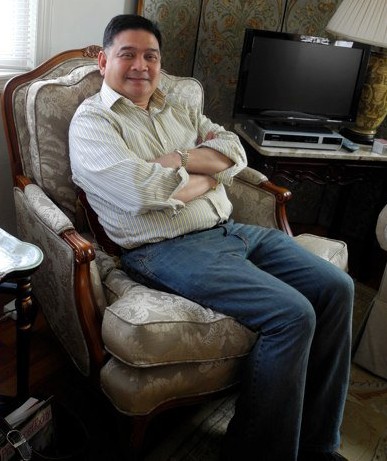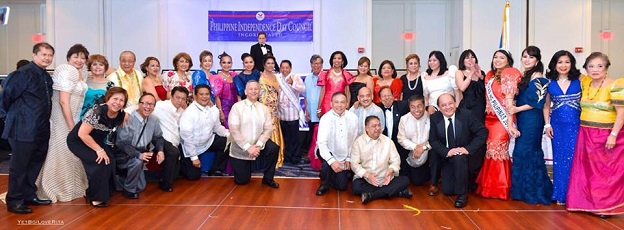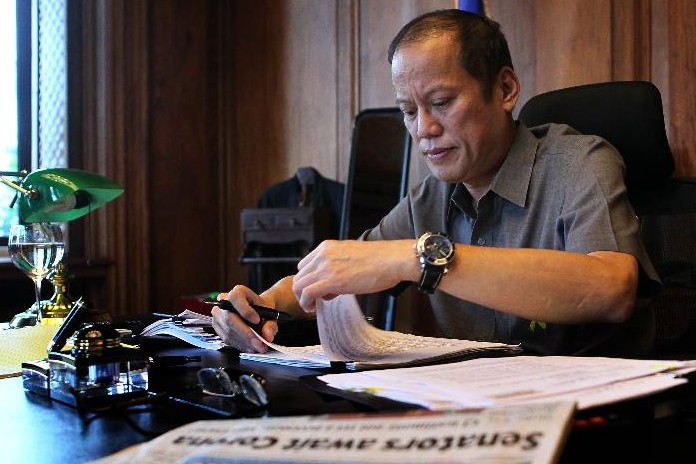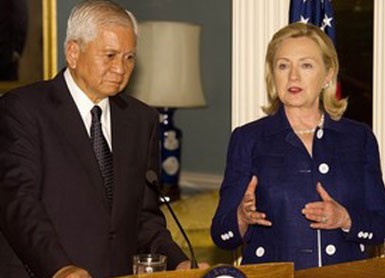‘High-level attention’ like Aquino state visit is important: think tank
By Robert WarshawIn the last year, the U.S. and the Philippines have strengthened security relations, as the U.S. furnished the Philippine Navy with a highly versatile refurbished coast guard cutter (a second is on the way this year), increased technical assistance to the Armed Forces of the Philippines, provided intelligence support and counterterrorism training, and elevated the level of their strategic dialogue. Kurt Campbell, Assistant Secretary of State for East Asian and Pacific Affairs, stated in a Congressional hearing that “we are on the verge of a renaissance in the relationship between the United States and the Philippines.”
Such a renewed interest in our oldest treaty-ally in Asia comes amid heightening tensions in the South China Sea, where six nations—including China and the Philippines—maintain competing claims over the area and its resources. China, whose claim expands to within mere miles of Philippine territory, has harassed Philippine ships on numerous occasions.
Indeed, protecting freedom of navigation in the South China Sea is clearly in America’s national interest, as $1.2 trillion in U.S. trade flows through these waters annually. Key to that is the Philippines, which, according to press reports, is welcoming a greater U.S. role in the region.
Last week, Philippine President Benigno Aquino expressed his desire that the U.S. and Philippines have “more of the same,” referring to more ship visits, more exercises, and more joint training—not unlike an agreement between the U.S. and Australia last November.
These steps are very encouraging, and the U.S. should stand ready to reciprocate by providing the Philippines with badly needed hardware and any necessary training. Moreover, with the Philippines’ geostrategic position in the South China Sea, the two sides should come to an agreement regarding U.S.-Philippines cooperation on reconnaissance from Philippine airfields, so as to bolster the nation’s flagging maritime domain awareness until such time as it can establish sufficient capacity of its own. Rotating U.S. forces through Philippine training facilities, like the U.S. Marines will soon do in Australia, as well as maintaining the U.S. counterinsurgency training force and observers in Mindanao, should also be discussed at next month’s meeting.
But U.S. commitment to the Philippines has to be more than defense-oriented. Expanding trade, through vehicles such as the SAVE Act and ultimately facilitating the Philippines’ entry into the Trans-Pacific Partnership will help ensure the Philippines has a diverse base of robust trading relationships, not too dependent on America, but also not dependent on China. High-level attention, including follow-through on a planned state visit by President Aquino to Washington this summer, is also important, especially as the election cycle divides U.S. attention.
Moreover, the best way to guarantee stability in the South China Sea is by maintaining a forward deployed, ready military posture across the Western Pacific. The Philippines is shifting its defense posture from counter-insurgency to territorial protection because of ongoing instability in the South China Sea, and it is no coincidence that recent clashes have occurred as China rises and the U.S., vaunted “pivot” notwithstanding, reduces its forces through draconian defense cuts.
Without the funding to back its rhetoric, the U.S. risks losing credibility within the region, precipitating even greater uncertainty and instability. Providing the Philippines with a few ships certainly helps our ally, but in the long-run, peace will be preserved through an institutionalization of our presence in a sustained budgetary commitment – particularly in the area of shipbuilding.
The 20th Asean Summit kicks off next week with China-friendly Cambodia in the Chair and the South China Sea off the agenda, despite the Philippines’ insistence. Even under its most competent and sympathetic leadership, Asean is not capable of protecting U.S. interests in maritime security and freedom of the seas. The U.S. – and the Philippines for that matter – will not fare well during Cambodia’s year as Chair.
With that in mind, strengthening our treaty alliances, and looking for new partners wherever possible, will be America’s most effective tool in preserving stability. Thankfully, the Philippines is proving a very willing and increasingly capable ally.
Robert Warshaw is a research assistant in the Asian Studies Center at The Heritage Foundation.













It is about time. The Nationalist days of the 80s are gone, and cooler heads prevail. The U.S. does NOT want permanent bases in the Philippines. The cost is too great. We paid ‘extortion money’ for one hundred years. 1982, the US had already decided not to agree to any major changes to the bases agreement; with tentative plans to downsize Clark AB to nothing more than a gas station. Clark was to be used as a ‘bargaining chip’ to hold on to the deep water port at Subic until alternative location could be found. In 1990, the decision was made; give up Clark for a few more years at Subic. And here comes Pinatubo eruption with a major Typhoon passing right overhead. During the 4th of July weekend, a final decision was made to terminate negotiations and start relocation. Ironically, four months after the decision, the Philippine congress voted not to renegotiate the bases agreement. “Face saving” show, of which the US never publicly condemned. Now 20 years later here we are. If China is left on their own, they will take whatever Islands and associated oilfield in the Philippine (South China) Sea that they want, when they want it. What will Aquino do to stop them…throw coconuts! Now it is in the best interest of both the Philippines and the United States to ‘forgive-and- not necessary forget’ bad times and join together in the defense of the vital shipping lanes and Philippine sovereignty. After all, renting a motel room is always better than buying the whole motel.